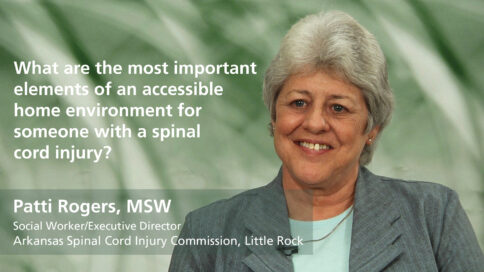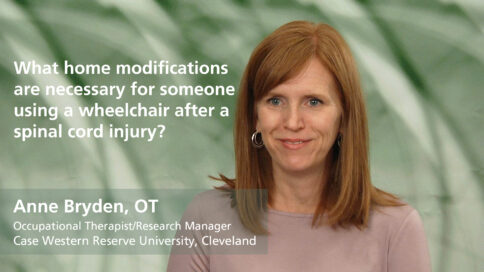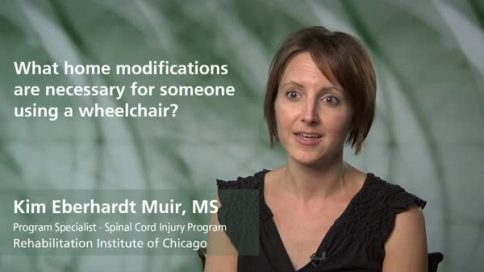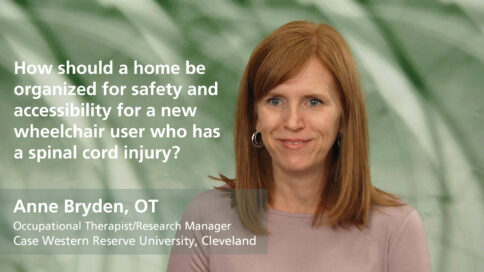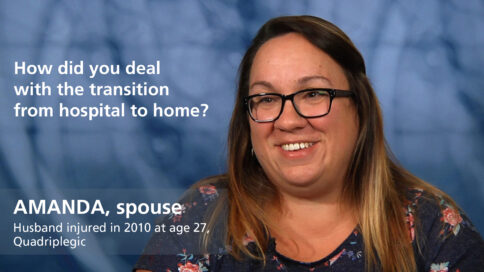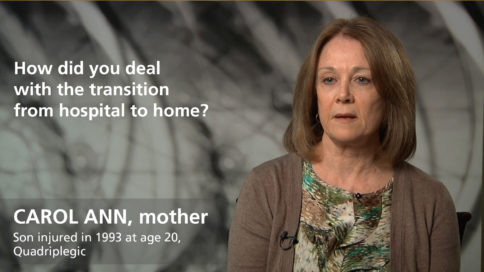What are the most important elements of an accessible home environment for someone with a spinal cord injury? - Marguerite David, MSW
|
|
What are the most important elements of an accessible home environment for someone with a spinal cord injury? |
|
Marguerite David, MSWSocial Worker, Seattle, Washington |
||
| Read Bio | More Videos by Marguerite David | |
|
Share |
||
Transcript
Well an accessible home environment would have to start with the entry and exit, and safety. So if there is a safety plan of how you can get out of the house in case of a fire or some emergency, and that would be usually a ramp, or lift or some other mechanism to get out of the house. And then within the house, look at the areas where you want to be. Look at, do you want to be in the kitchen if you’re a homemaker, then you should certainly make the kitchen accessible or find ways to—if you’re a wheelchair user — lower the counters, or if you’re a wheelchair-crutch user make adjustable shelves for example, that would be the kitchen environment. You also need access to the place you sleep and preferably to the bathroom area to meet your needs. But does every bedroom have to be wheelchair accessible? No. If you’re not using that bedroom or you’re not inclined into go into that bedroom, and if you have a spinal cord injury you’re hardly likely to be climbing up to the attic. So look at the function of what you do in your home and whether the rooms have to be accessible. I had a father who happened to be a Samoan who had to inform me of Samoan culture in order to look at the home and accessibility. He informed me he did not need access to his children’s room. In Samoan culture, the children come to the parents’ bedroom, and that’s where they socialize and have their family time in the evening. And therefore, he did not need his four children to have wheelchair-accessible rooms. So there’s an example of individualizing what you ordinarily would say, “Oh every bedroom needs to have a wheelchair-accessible door and so forth.” Not in his culture it didn’t, so he only got the one door accessible to him and the kids came to him.
Show Less|
|
||
add
What are the most important elements of an accessible home environment for someone with a spinal cord injury? |
||
Marguerite David, MSWSocial Worker, Seattle, Washington |
More Videos by Marguerite David | |
| Transcriptadd | share | |
Well an accessible home environment would have to start with the entry and exit, and safety. So if there is a safety plan of how you can get out of the house in case of a fire or some emergency, and that would be usually a ramp, or lift or some other mechanism to get out of the house. And then within the house, look at the areas where you want to be. Look at, do you want to be in the kitchen if you’re a homemaker, then you should certainly make the kitchen accessible or find ways to—if you’re a wheelchair user — lower the counters, or if you’re a wheelchair-crutch user make adjustable shelves for example, that would be the kitchen environment. You also need access to the place you sleep and preferably to the bathroom area to meet your needs. But does every bedroom have to be wheelchair accessible? No. If you’re not using that bedroom or you’re not inclined into go into that bedroom, and if you have a spinal cord injury you’re hardly likely to be climbing up to the attic. So look at the function of what you do in your home and whether the rooms have to be accessible. I had a father who happened to be a Samoan who had to inform me of Samoan culture in order to look at the home and accessibility. He informed me he did not need access to his children’s room. In Samoan culture, the children come to the parents’ bedroom, and that’s where they socialize and have their family time in the evening. And therefore, he did not need his four children to have wheelchair-accessible rooms. So there’s an example of individualizing what you ordinarily would say, “Oh every bedroom needs to have a wheelchair-accessible door and so forth.” Not in his culture it didn’t, so he only got the one door accessible to him and the kids came to him.
